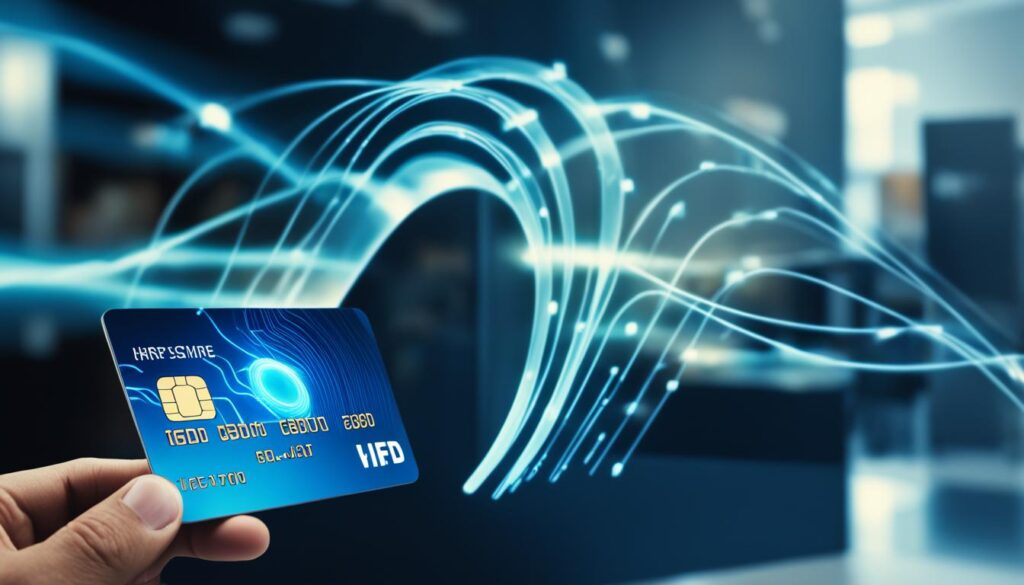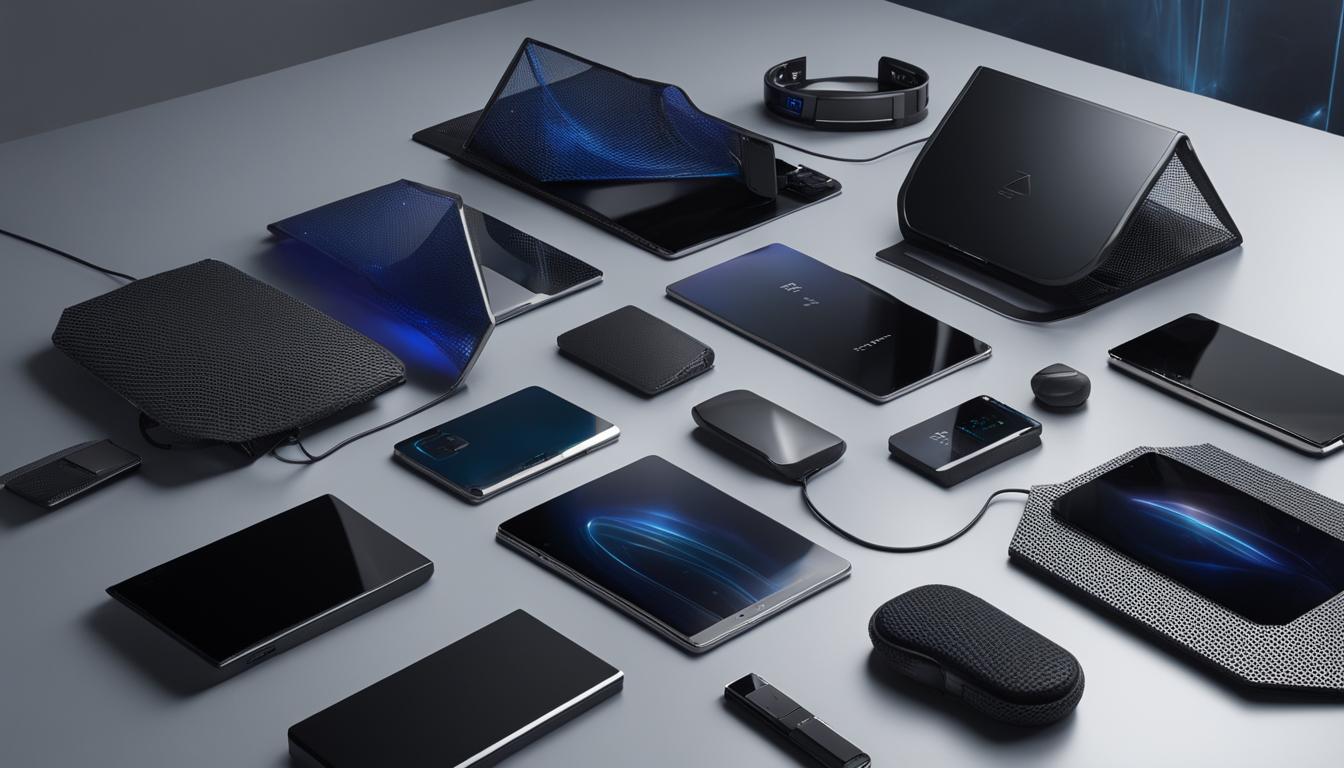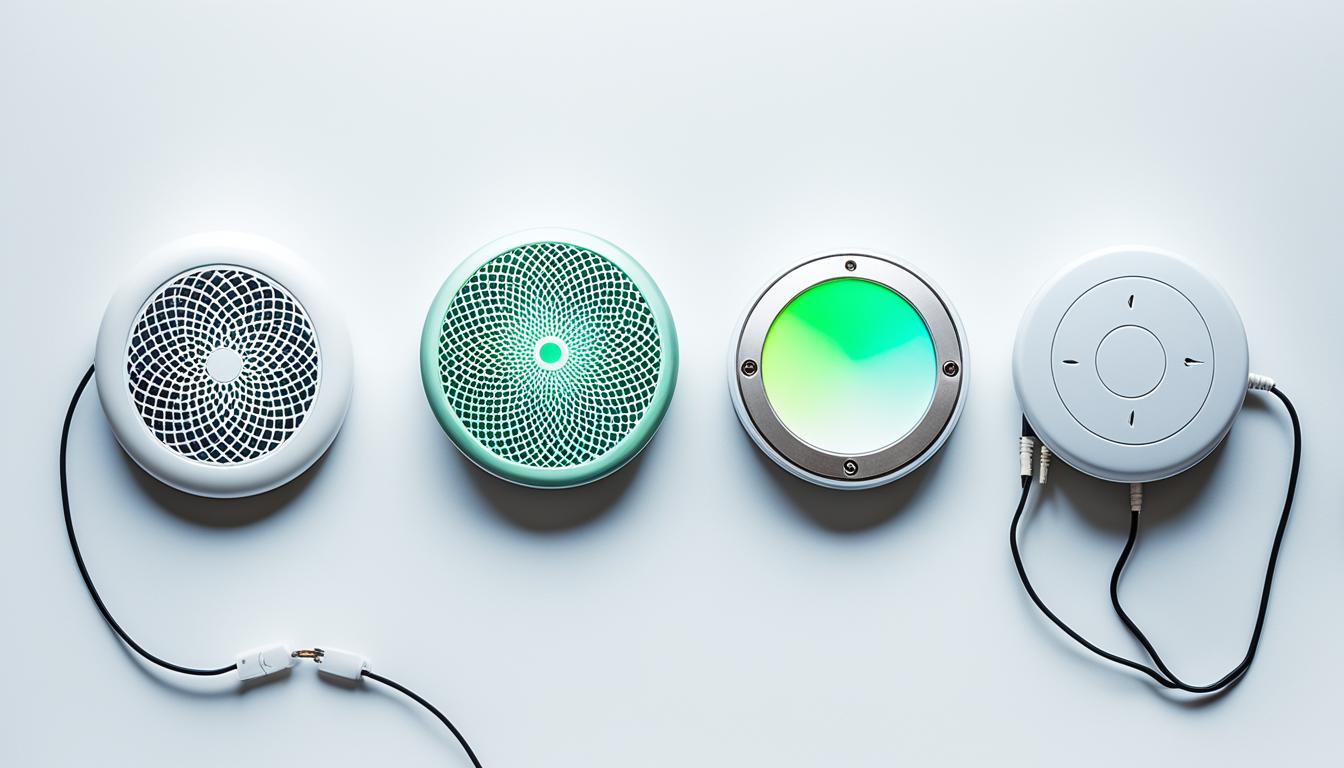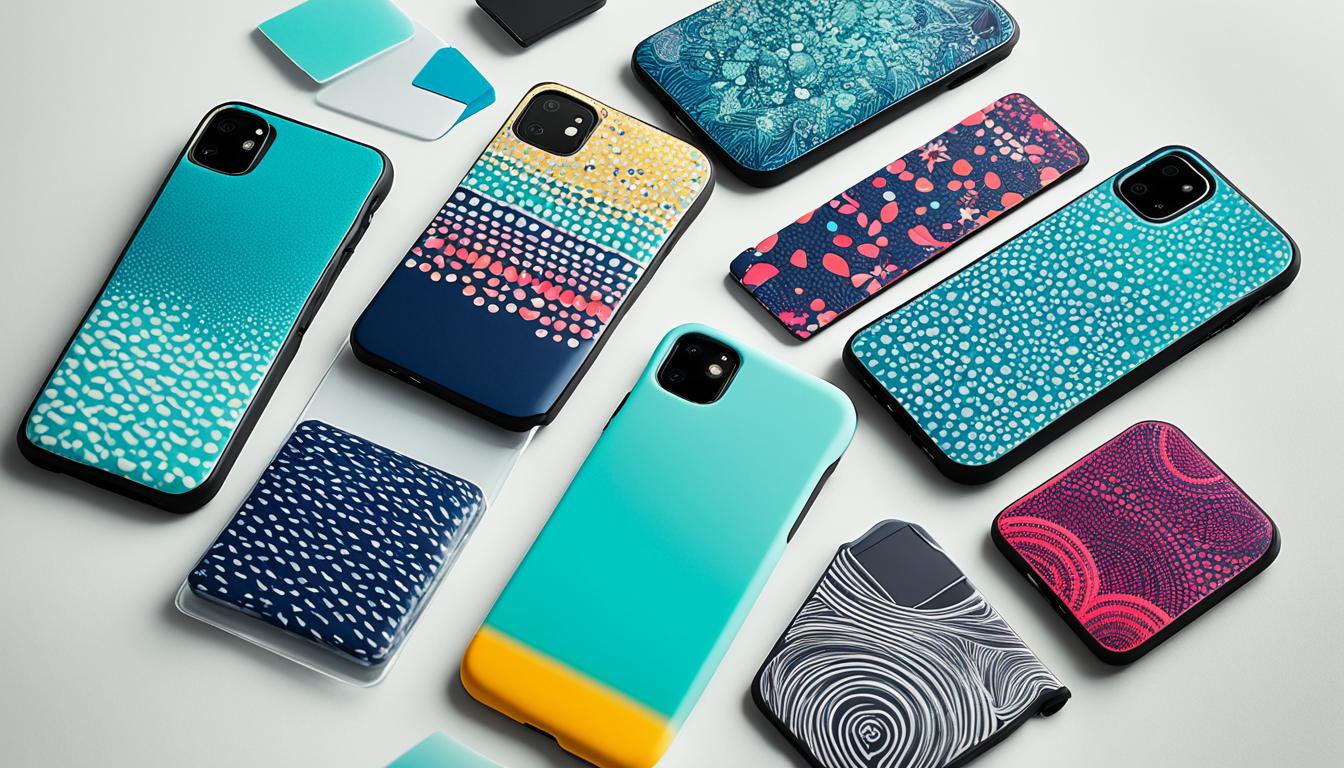Disclosure: This Post Contains Affiliate Links; We earn a commission on purchases.
In today’s digital age, concerns about electromagnetic fields (EMF) and their potential impact on our health are growing. With the increased use of cell phones, Wi-Fi, and other electronic devices, many people are looking for ways to reduce their exposure to EMF radiation. This has led to the emergence of a thriving industry that claims to offer EMF protection products, such as shielding devices, blockers, and neutralizers.
While the debate about the potential harm of EMF radiation continues, organizations like the American Cancer Society and the National Institute of Environmental Health Sciences state that more research is needed to fully understand the risks. However, there are experts who remain skeptical about the effectiveness of EMF protection products and warn against scams that make false claims.
So, the question remains: Are there EMF protection products that actually work? In this article, we will explore the effectiveness of these products and provide insight into how to make informed decisions when it comes to protecting yourself from electromagnetic radiation.
Key Takeaways:
- There is an ongoing debate about the potential harm of EMF radiation and the effectiveness of EMF protection products.
- Organizations like the American Cancer Society and the National Institute of Environmental Health Sciences emphasize the need for more research to fully understand the risks.
- Experts remain skeptical about the effectiveness of many EMF protection products and warn against scams that make false claims.
- It is important to make informed decisions when choosing EMF protection products and to be cautious of vendors that rely on technical jargon rather than scientifically valid tests.
- While there is no product that can provide complete protection against all forms of EMF radiation, there are practical steps individuals can take to reduce their exposure.
Understanding EMF Radiation
EMF radiation, also known as electromagnetic field radiation, refers to the energy emitted by electromagnetic fields. It is a topic of ongoing debate and concern due to its potential health risks. Cell phones and devices that use radiofrequency electromagnetic fields (RF-EMF), such as Wi-Fi and Bluetooth, are often sources of this radiation. While studies have not yet found a conclusive link between cell phone use and cancer, experts emphasize the need for further research to fully understand the risks.
EMF radiation is a form of non-ionizing radiation, which means it does not have enough energy to remove electrons from atoms or molecules. However, there are concerns that long-term exposure to EMF radiation may have adverse effects on human health.
It is important to note that while research on the potential health risks of EMF radiation is inconclusive, it is always advisable to take precautions to minimize exposure.
Potential EMF Radiation Sources
There are several common sources of EMF radiation:
- Cell phones and smartphones
- Wi-Fi routers and devices
- Bluetooth devices
- Power lines
- Electrical appliances
- Wireless charging pads
These sources emit varying levels of EMF radiation, with cell phones being one of the primary concerns due to their widespread use and close proximity to the body.
Potential Health Risks
While the research on the health effects of EMF radiation is still inconclusive, some studies have suggested possible risks, while others have found no conclusive evidence. The debate centers around the potential link between EMF radiation and cancer, particularly brain tumors.
Current scientific understanding suggests that the energy levels of EMF radiation from cell phones and other devices are too low to cause direct DNA damage, which is a common cause of cancer. However, there are concerns about the potential for long-term exposure to contribute to cancer development over time.
It is important to note that claims linking EMF radiation to other health issues, such as infertility or neurological disorders, lack consistent scientific evidence.
Protecting Yourself from EMF Radiation
There are several steps you can take to minimize your exposure to EMF radiation:
- Limit cell phone use and keep the device away from your body when possible.
- Use hands-free options, such as speakerphone or wired earphones, to reduce direct contact with the device.
- Avoid carrying your cell phone in your pocket or close to your body for extended periods.
- Keep Wi-Fi routers and other wireless devices away from bedrooms and living areas, especially during sleep.
- Turn off Wi-Fi and Bluetooth connections when not in use.
By implementing these practices, you can reduce your exposure to potential EMF radiation. However, further research is needed to fully understand the long-term effects of EMF radiation and establish clear guidelines for safe exposure levels.
| EMF Radiation Source | Exposure Level | Potential Health Risks |
|---|---|---|
| Cell phones and smartphones | Close proximity to the body | Possible link to increased cancer risk, particularly brain tumors |
| Wi-Fi routers and devices | Constant exposure in close proximity | Debate regarding potential long-term health effects |
| Bluetooth devices | Close proximity to the body | Minimal evidence of direct health risks |
| Power lines | Proximity to high-voltage power lines | Inconclusive evidence of health risks |
| Electrical appliances | Close proximity to the body during use | Generally considered safe at typical exposure levels |
| Wireless charging pads | Close proximity to the body during use | No conclusive evidence of direct health risks |
The Effectiveness of EMF Protection Products
In today’s market, there is an abundance of EMF protection products, each claiming to reduce exposure to harmful radiation. However, it is essential to approach these claims with caution and consider the opinions of experts who question their efficacy.
Bioengineering professor Kenneth Foster, among others, remains skeptical about the effectiveness of most EMF protection devices. As an average consumer, it can be challenging to determine the true effectiveness of these products. Many of them lack scientifically valid tests to demonstrate their claims. This leaves consumers uncertain about their ability to provide sufficient protection against electromagnetic fields.
Some of these products, such as pendants and stickers, have been widely criticized for their dubious effectiveness. In fact, experts believe these items provide little to no benefit in terms of shielding against EMF radiation.
The lack of concrete evidence supporting the effectiveness of EMF protection products raises concerns about their validity. Without proper scientific validation, it becomes challenging to trust claims made by manufacturers and sellers.
When considering EMF protection products, it is crucial to make informed decisions based on reliable information. Consulting experts, seeking advice from reputable sources, and evaluating products backed by independent testing can aid in selecting the most effective options available. By doing so, individuals can prioritize their well-being and potentially minimize their exposure to harmful electromagnetic radiation.
Why Experts Question Their Effectiveness
The skepticism surrounding the effectiveness of EMF protection products stems from several factors:
- Lack of scientific evidence: Many of these products fail to demonstrate their effectiveness through reliable scientific studies.
- Unregulated market: The absence of consistent industry standards and regulations makes it difficult to assess the quality and reliability of these products.
- False claims: Some manufacturers make misleading or exaggerated claims about the protective capabilities of their products, further adding to doubts about their effectiveness.
While more research is needed to determine the true efficacy of EMF protection products, taking a cautious and discerning approach when considering these devices is crucial.
Potential Risks of Scam EMF Protection Products
As the market for EMF protection products continues to grow, it is important to be aware of potential scams and fraudulent devices that make false claims. The Federal Trade Commission (FTC) has issued warnings about EMF protection scams, urging consumers to exercise caution when purchasing these products.
One risk associated with scam EMF protection products is the use of cloth shielding material with metal woven into it. While these products claim to block or reduce EMF radiation, they can actually reflect or absorb radio waves, potentially increasing exposure instead of minimizing it. It is important to be skeptical of vendors who rely on technical jargon without providing scientifically valid tests to support their claims.
To understand the potential risks of fraudulent EMF protection devices, it is essential to differentiate between legitimate products and scams. Table 1 provides an overview of characteristics to look out for when evaluating the effectiveness of EMF protection products.
| Characteristics | Scam EMF Protection Products | Legitimate EMF Protection Products |
|---|---|---|
| Scientifically Valid Testing | May lack proper testing or provide biased results | Backed by independent testing from reputable sources |
| False Claims | Exaggerated or unsupported claims about EMF reduction | Clear and realistic claims about the product’s capabilities |
| Materials | May use low-quality materials or ineffective shielding fabrics | Utilize high-quality materials with proven EMF-blocking properties |
| Customer Reviews | Few or unreliable customer testimonials | Positive reviews and testimonials from satisfied customers |
Table 1: Evaluating EMF Protection Products
By being vigilant and informed, consumers can protect themselves from falling victim to EMF protection scams. It is advisable to research product reviews, seek recommendations from trusted sources, and choose products that have undergone independent testing by reputable laboratories.
Remember, genuine and effective EMF protection products prioritize transparency, provide credible scientific evidence, and genuinely aim to reduce exposure to harmful radiation. It is crucial to invest in products from trusted brands that prioritize consumer safety and consistently adhere to rigorous testing standards.
To visually demonstrate the potential risks of scam EMF protection products, consider the image below:
UVC Sanitizers and EMF Exposure
In recent times, UVC sanitizers have gained immense popularity, especially during the COVID-19 pandemic. These compact disinfecting devices utilize ultraviolet light to eliminate pathogenic microorganisms, providing an additional layer of protection against viruses and bacteria.
However, the effectiveness of UVC light as a primary disinfectant is still a subject of debate in the scientific community. While UVC light has been proven effective in laboratory settings, it’s important to note that lengthy exposure is often required for optimal disinfection. Moreover, there are potential health risks associated with improper use of UVC sanitizers.
The U.S. Food and Drug Administration (FDA) states that there is not enough data to measure the effectiveness of UVC cleaning for inactivating specific viruses, including the novel coronavirus. Vaccination, wearing masks, and maintaining social distancing continue to be the most effective ways to prevent infection and spread.
It is crucial to exercise caution when using UVC sanitizers and follow the manufacturer’s instructions carefully. Improper use may result in health risks and limited effectiveness in eliminating viruses.
Test Data on UVC Sanitizers
Despite the popularity of UVC sanitizers, it is essential to consider the limitations of existing test data. Test data provided by manufacturers may not always accurately reflect real-world scenarios, as laboratory conditions can differ significantly from everyday usage.
Furthermore, the efficacy of UVC sanitizers in inactivating pathogens can be influenced by factors such as distance, duration of exposure, and the surface or material being sanitized. These variables should be considered when interpreting the test data provided by manufacturers.
Health Risks Associated with UVC Sanitizer Use
While UVC light has proven effective in killing pathogens, it can also pose potential health risks if not used correctly. Prolonged exposure to UVC light can cause skin and eye irritation, leading to discomfort or even damage.
To reduce the risk of UV exposure, it is important to follow safety guidelines while using UVC sanitizers. This includes avoiding direct exposure to UVC light, wearing protective eyewear, and ensuring that the sanitizer is used in a well-ventilated area.

Choosing a Safe and Effective UVC Sanitizer
When selecting a UVC sanitizer, it is crucial to look for products that have been tested and certified by reputable organizations. The product should comply with safety standards and provide clear instructions for safe and effective use.
In addition, it is advisable to consider UVC sanitizers that incorporate safety features such as auto shut-off mechanisms or timers to prevent prolonged exposure.
| Pros of UVC Sanitizers | Cons of UVC Sanitizers |
|---|---|
|
|
Ultimately, while UVC sanitizers can provide an additional layer of disinfection, they should not be relied upon as the sole method of virus protection. Adhering to recommended health guidelines, such as maintaining good hand hygiene, wearing masks, and practicing social distancing, remains paramount in reducing the risk of infection.
Antimicrobial Materials and EMF Exposure
Antimicrobial materials have gained prominence as a way to reduce exposure to bacteria and potentially minimize infection risks. These materials, including nanostructured coatings and those infused with silver, exhibit properties that can help reduce bacterial growth and proliferation.
While the effectiveness of antimicrobial materials against viruses like COVID-19 is not well-documented, they still play a vital role in maintaining hygiene and cleanliness.
It is important to note that antimicrobial materials should not be solely relied upon as a comprehensive solution for viral protection. Instead, proper hygiene practices such as regular handwashing, wearing masks, and maintaining social distancing remain the cornerstone for preventing infection and transmission.
Employing antimicrobial materials, in addition to following hygiene practices, can contribute to a more hygienic and protected environment. However, it is essential to understand that antimicrobial materials alone may not provide complete viral protection and should be used in conjunction with other preventive measures.
Benefits of Antimicrobial Materials
Antimicrobial materials offer several advantages in maintaining a hygienic environment:
- Reduced bacterial growth: Antimicrobial materials can inhibit the growth and proliferation of bacteria, minimizing the risk of infections.
- Enhanced cleanliness: Surfaces infused with antimicrobial properties can maintain a cleaner and more hygienic environment by reducing the presence of bacteria.
- Potential long-term effects: Antimicrobial materials persistently hinder bacterial growth, providing ongoing protection over time.
While antimicrobial materials offer valuable benefits, they should be regarded as a complementary measure to existing hygiene practices, rather than a stand-alone solution for viral protection.
| Antimicrobial Material | Bacteria Reduction | Viral Protection |
|---|---|---|
| Nanostructured Coatings | Effective in reducing bacterial growth | Efficiency against viruses not well-documented |
| Silver-Infused Materials | Exhibits antimicrobial properties against bacteria | Effectiveness against viruses varies |
RFID Skimming and Protection
RFID skimming is a method used by criminals to steal payment information from credit cards and passports using radio frequency identification (RFID) technology. With the rise of contactless payments, the concern of data theft and credit card fraud has become more prevalent.
However, the need for RFID-blocking products to protect against RFID skimming is subject to debate. Many experts argue that the risk of RFID-related crime is relatively low. Most credit cards only transmit limited information via RFID, making it less attractive for scammers compared to other methods of obtaining credit card information.
Rather than investing in RFID-blocking products, it is essential to take other precautionary measures to safeguard against credit card fraud. Here are some tips:
- Regularly monitor your credit card statements to identify any unauthorized transactions.
- Report any lost or stolen cards immediately to your bank or credit card provider.
- Enable transaction alerts to receive notifications for every purchase made with your credit card.
- Avoid sharing your credit card information or PIN with anyone.
- Use secure payment methods and websites when making online transactions.
- Consider using contactless payment methods that require additional security measures, such as biometric authentication or transaction verification codes.
By following these precautions, you can minimize the risk of credit card fraud without relying solely on RFID-blocking products.
If you are still concerned about RFID skimming, there are RFID-blocking products available in the market. These products, such as RFID-blocking wallets, sleeves, and bags, are designed to create a barrier that prevents scammers from accessing your credit card information. While their effectiveness may vary, they provide an additional layer of security for those seeking extra peace of mind.

Remember, staying informed and implementing proper security measures is key to protecting your personal and financial information from potential risks.
Finding Effective EMF Protection Products
When it comes to protecting yourself from electromagnetic fields (EMF), it’s essential to find effective products that can provide the necessary shield against harmful radiation. DefenderShield is a trusted company that offers a range of EMF protection products backed by independent FCC-certified laboratory testing.
One of the key aspects that sets DefenderShield apart is their commitment to rigorous testing and verification. By obtaining certification from the Federal Communications Commission (FCC), DefenderShield ensures that their products meet the highest standards of performance and effectiveness. This certification provides customers with peace of mind, knowing that they are investing in reliable EMF protection.
But don’t just take our word for it – testimonies from customers who suffer from electromagnetic hypersensitivity (EHS) provide further evidence of the effectiveness of DefenderShield’s technology. Many individuals have experienced a reduction in symptoms such as headaches, fatigue, and brain fog after using DefenderShield products.
If testimonials aren’t enough to convince you, product testing videos are available to demonstrate the capabilities of DefenderShield’s technology. These videos showcase how their products effectively block EMF radiation emitted from devices like laptops and cell phones, offering tangible proof of their protective capabilities.
Investing in effective EMF protection is crucial for safeguarding your health. With DefenderShield’s FCC-certified laboratory testing, customer testimonials, and product testing videos, you can have confidence in the reliability and effectiveness of their EMF-blocking technology.
The Technology Behind DefenderShield’s EMF Protection Products
DefenderShield’s EMF protection products are built on advanced technology designed to shield against both extremely low frequency (ELF) radiation and radiofrequency (RF) radiation. The company utilizes a combination of innovative features and non-toxic materials to provide comprehensive protection against harmful EMF radiation.
ELF Radiation and RF Radiation
EMF radiation consists of two main types: extremely low frequency (ELF) radiation and radiofrequency (RF) radiation. ELF radiation is emitted by power lines, electrical wiring, and electronic devices, while RF radiation is produced by wireless communication devices such as cell phones, Wi-Fi routers, and Bluetooth devices.
DefenderShield’s products are specifically designed to block both ELF radiation and RF radiation, ensuring comprehensive protection against a broad range of electromagnetic frequencies.
Non-Toxic and Human Safe Materials
One of the key features of DefenderShield’s technology is its use of non-toxic materials. The company prioritizes the use of human safe materials that do not pose any health risks. These materials have been carefully selected and tested to ensure they meet strict safety standards and provide effective EMF protection.
Radiation Shielding Characteristics
DefenderShield’s products incorporate unique radiation-shielding characteristics that enable them to effectively block and dissipate EMF radiation. The combination of multiple layers of specially engineered materials creates a barrier that can block up to 99% of harmful EMF radiation across the entire frequency spectrum.
By conducting, absorbing, and dissipating radiation emissions, DefenderShield’s technology minimizes the amount of radiation that reaches the body, reducing potential health risks associated with prolonged exposure to EMF radiation.
DefenderShield’s EMF Protection Technology
| EMF Protection Features | Benefits |
|---|---|
| Advanced ELF and RF radiation blocking | Comprehensive protection against a broad range of electromagnetic frequencies |
| Non-toxic and human safe materials | No health risks associated with product use |
| Multiple layers of radiation-shielding materials | Blocks up to 99% of harmful EMF radiation |
DefenderShield’s EMF protection products offer advanced technology and effective shielding characteristics, providing users with peace of mind and reducing potential health risks associated with EMF radiation exposure.
Featured EMF Protection Products by DefenderShield
DefenderShield offers a range of EMF protection products designed to provide comprehensive shielding from devices. These include:
- Cell phone protector: Protect your cell phone during calls and storage, reducing radiation exposure.
- Laptop protection: Shield your lap from EMF radiation while using your laptop or tablet.
- Earbuds with air tube technology: Experience radiation-free audio with these innovative earbuds.
- Blue light glasses: Block harmful blue light emissions from digital screens, reducing eye strain and sleep disruption.
- Identity theft protection: Safeguard your personal information with EMF protection pouches and holsters.
- EMF protection blanket: Especially beneficial for pregnant women, this blanket offers EMF shielding for a restful sleep.
- EMF protection pouch and holster: Conveniently carry and protect your devices while reducing exposure to EMF radiation.
These products are carefully crafted using advanced technology and high-quality materials to provide effective EMF protection. DefenderShield is dedicated to keeping you safe in today’s digital world.
Practical Tips for EMF Radiation Protection
In addition to using EMF protection products, there are practical steps individuals can take to reduce EMF exposure. By implementing these simple modifications, you can minimize your exposure to electromagnetic radiation and promote a healthier environment.
1. Modify Phone Use
- Use a Bluetooth speaker or hands-free device instead of holding the phone up to your ear. This minimizes direct contact between your head and the device, reducing exposure to EMF radiation.
- Avoid extensive phone use in areas with weak signals. When your phone has a weak signal, it increases its power output to establish a connection. Limiting phone use in such areas can help reduce your overall exposure to EMF radiation.
- Practice moderation in cell phone use. Limit the amount of time you spend on calls and consider using other communication methods, like text messaging or video calls, when possible.
Implementing these phone use modifications can significantly reduce your exposure to EMF radiation, promoting a safer and healthier lifestyle.
2. Be Mindful of Weak Signal Areas
Avoid using your cell phone in weak signal areas as much as possible. In these areas, your phone needs to work harder to maintain a signal, resulting in increased power output and higher levels of EMF radiation. When you find yourself in a weak signal area, consider moving to a location with stronger signal strength before using your phone.
3. Utilize EMF-Reducing Accessories
Invest in EMF-protective accessories, such as cases or covers, that are designed to reduce the transmission of EMF radiation. These accessories can provide an additional layer of protection between your body and the device.
4. Minimize Device Use in Bed
Avoid using electronic devices, such as smartphones or tablets, in bed before sleep. The blue light emitted by these devices can disrupt your circadian rhythm and interfere with quality sleep. Opt for activities that promote relaxation and better sleep, such as reading a book or practicing relaxation techniques.
By following these practical tips, you can take active steps towards reducing your exposure to EMF radiation and ensuring a safer environment for yourself and your loved ones.
Conclusion
After exploring the effectiveness of EMF protection products, it is clear that there are potential solutions available to safeguard against electromagnetic radiation. Companies like DefenderShield offer products that have undergone testing and have received positive customer testimonials, suggesting their efficacy in reducing symptoms related to electromagnetic hypersensitivity. While these products can provide a sense of security, it is important to understand that they cannot offer complete protection against all forms of EMF radiation.
To effectively safeguard against electromagnetic radiation, it is essential to adopt a multi-faceted approach. This includes balancing responsible device usage by minimizing exposure, practicing good hygiene by following standard health guidelines, and staying informed about the latest research and recommendations. By incorporating these measures into daily life, individuals can better protect themselves against the potential risks associated with EMF radiation.
While the ongoing debate surrounding the effectiveness of EMF protection products may continue, it is evident that there are effective solutions available for those concerned about the potential health risks of electromagnetic radiation. By staying informed and taking proactive steps, individuals can make informed decisions and mitigate their exposure to EMF radiation, promoting their overall well-being in today’s digital age.
Source Links
- https://greenopedia.com/brand-spotlight-defendershield-emf-protection/
- https://www.amazon.com/stores/DefenderShield-EMFProtection5GSafety/DefenderShield-EMFProtection5GSafety/page/B25FBDD4-0C85-4A39-AEA4-2A5605FE1B44
- https://www.wired.com/story/uvc-sanitizers-antimicrobial-cell-phone-radiation-rfid-blocker-tech-scaremongering/

Subscribe to Our Newsletter










